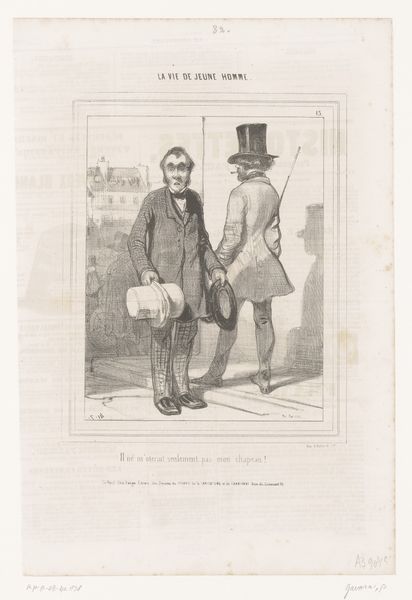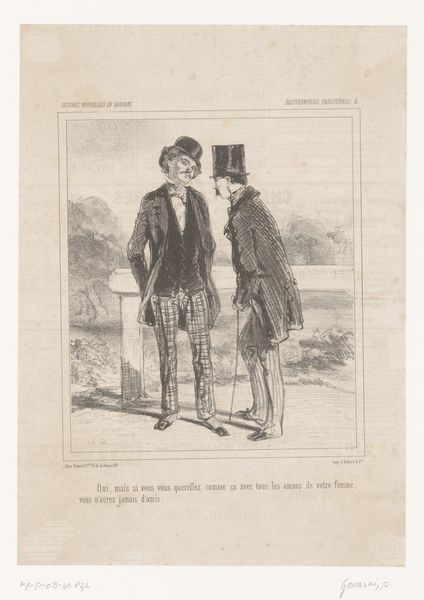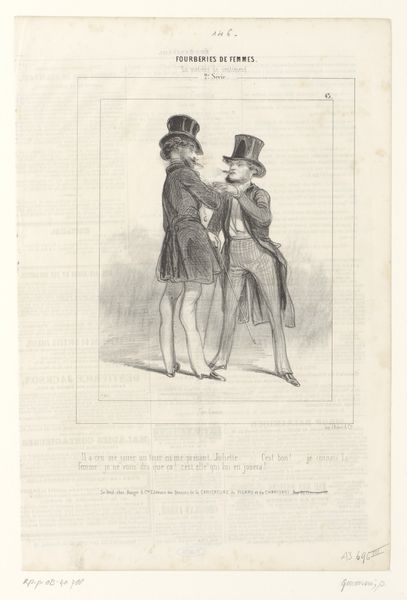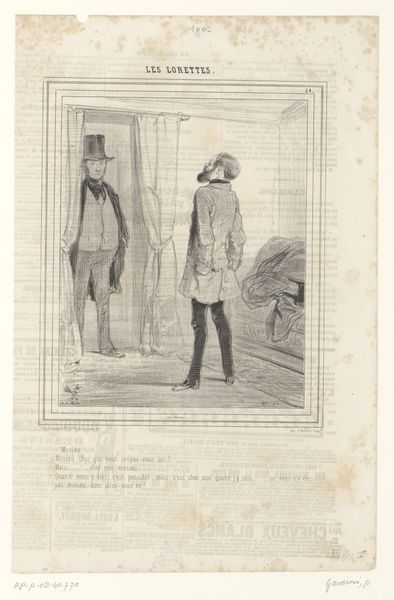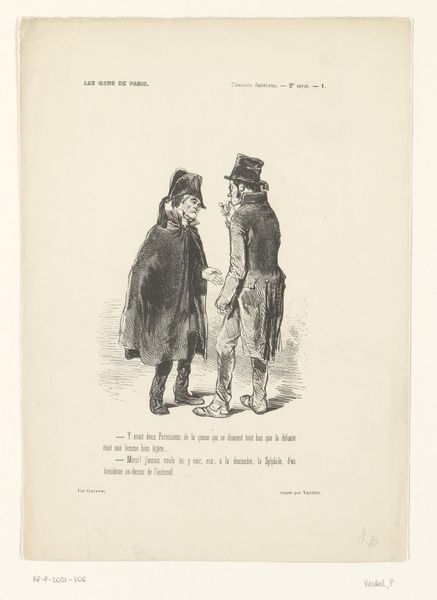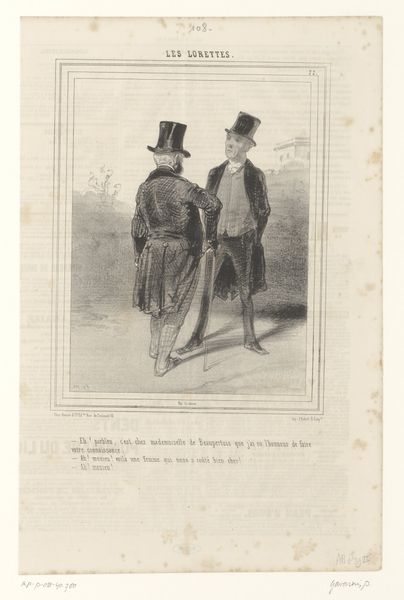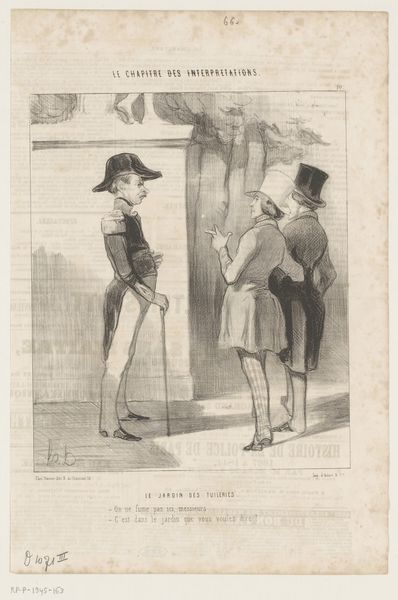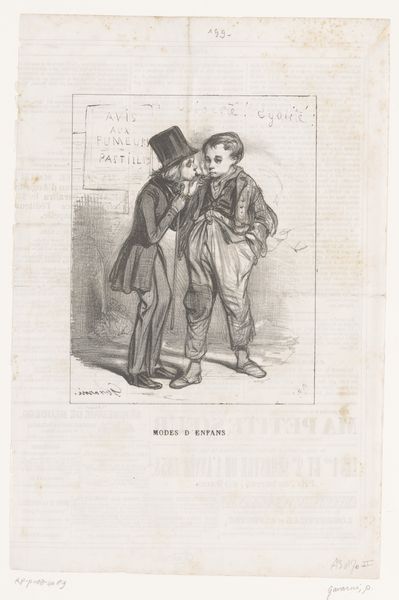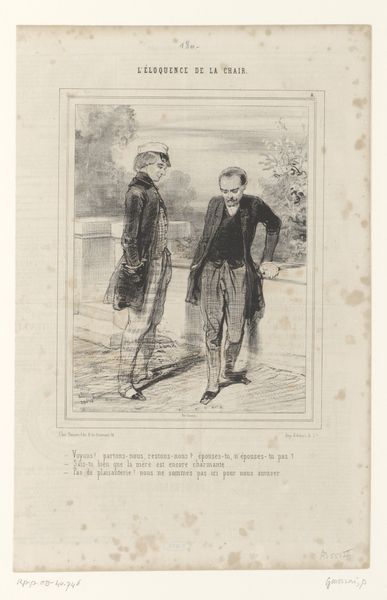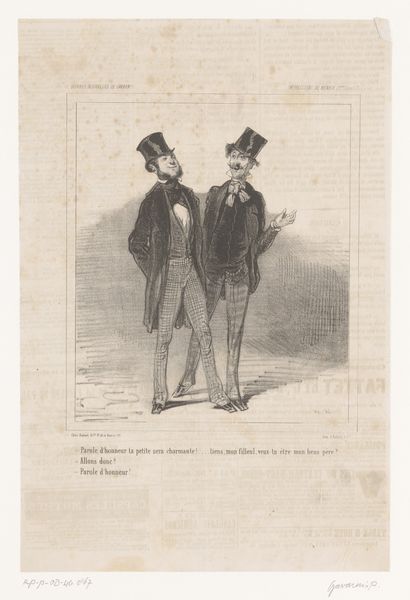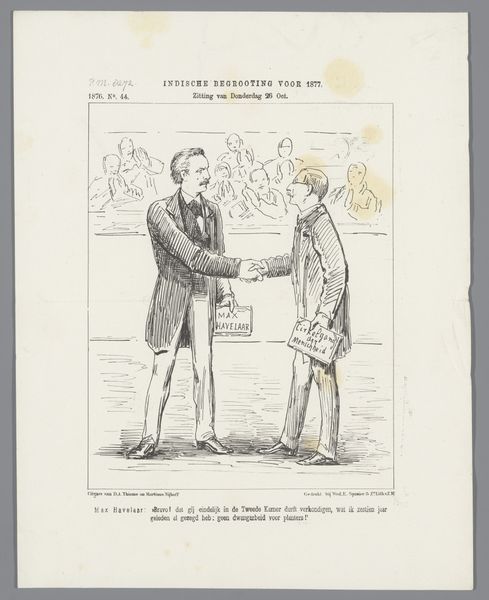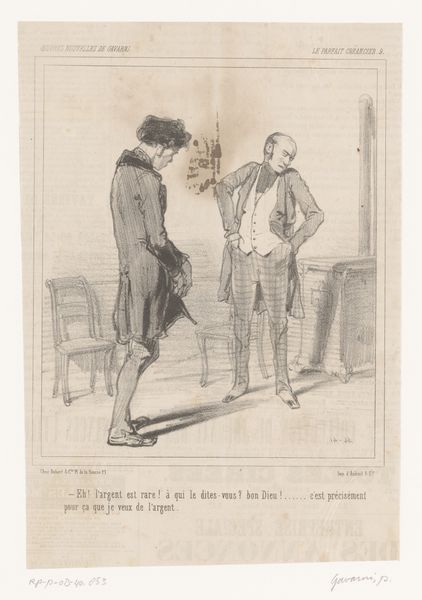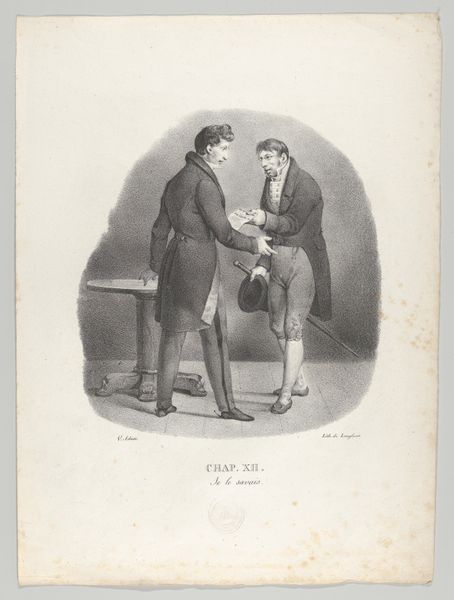
drawing, paper, ink
#
portrait
#
drawing
#
pencil sketch
#
paper
#
ink
#
romanticism
#
genre-painting
Dimensions: height 353 mm, width 240 mm
Copyright: Rijks Museum: Open Domain
Curator: This is an ink and pencil drawing on paper titled "Le Charivari, Costumes de Humann, nov. 1841," dating from, unsurprisingly, 1841. It's part of the Rijksmuseum collection. Editor: Immediately, I’m drawn to the somewhat somber mood and the understated elegance. The line work feels very controlled, precise. Curator: Considering its likely origin as a costume study for "Le Charivari," the French satirical newspaper, the level of detail isn’t surprising. Note the textural rendering of the coats. There’s a tangible weight conveyed by the ink. You can almost feel the quality of the cloth. The means of production allowed for wide dissemination, and hence standardization, of fashion. Editor: Yes, these are obviously members of the bourgeoisie. It’s interesting how the turn of the body, especially in contrast to the facing figure, almost represents differing viewpoints or even inner psychological states. One, open and present; the other more guarded, even evasive. Curator: I would be wary of reading too much depth into a work produced with reproducibility in mind. The aim here was to represent current trends for a mass audience. Observe the relatively quick, economical way the background is handled. The emphasis is very much on surface appearance. Editor: Perhaps. But surface appearance is often symbolic in itself. Look at the carefully rendered buttons, the set of the collars – each choice projects a message. Even their association suggests societal roles, and the potential satirical undertones speak volumes about class critiques of the time. Curator: The clothing becomes the man, or rather, the representation of the man for public consumption. Each layer and crease indicates its manufacturing. Humann most likely gained much influence through this popular publication; his material worth must have increased with demand for popular drawings of social customs like these! Editor: Agreed, but it's more than that! Fashion is a language. These details speak to a deeper symbolic context – anxieties about social standing and moral identities through what we choose to display to the world, whether perceived accurately or not. Curator: Well, whether you see a cutting social commentary or a careful observation of the emerging mass market, “Costumes de Humann” offers fascinating insight into material culture during this period. Editor: It does provide layers of historical and visual analysis, revealing the cultural intricacies embedded within an ostensibly simple illustration.
Comments
No comments
Be the first to comment and join the conversation on the ultimate creative platform.
